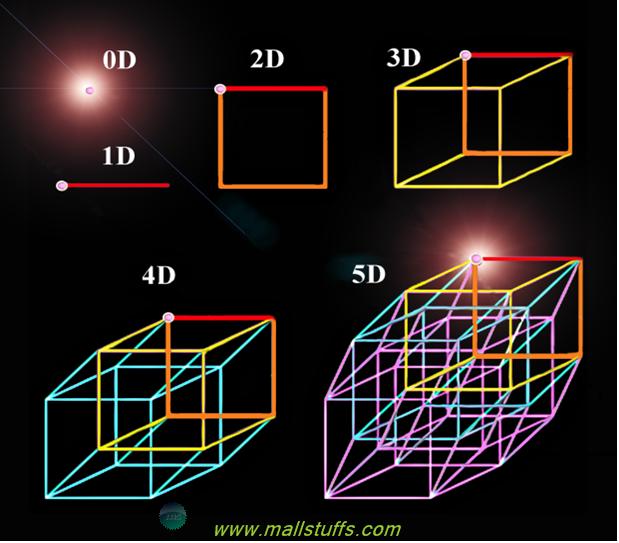REMEMBERING MAXINE
DORIS MAXINE HARPER FINTON SACK
born October 18, 1919
died January 20, 2009
It occurs to me that when you are talking about the life of a person and the meaning of the time they spend on earth, you are entering a gray area—a scary place that not many people like to go. You are talking about the evolution of a spirit—the changes that a lifetime makes in a soul. At the same time, you are being judgmental, revealing your own values, beliefs, and patterns of thought in your words and praises— judging how the other person stood up to your own peculiar beliefs and evaluations.
Maxine was one of those rare species of human beings that took pleasure from being in the service of others. Not that she was totally selfless, as few of us are. Not that she was a saint, as none of us have perfect love, perfect lives, or perfect morals. Only the long-dead folks are made saints—and even then, it is only after the life they really lived has been selectively forgotten.
Born in Salem, Oregon, in October 1919 and living into January 2009 mathematically made Maxine 89 years old when she died, but the view outside the window of her person was truly remarkable. She never knew her father, Clinton Byron Harper. He died of Spanish Influenza before she saw the first light of day. She was raised by her mother, Cora Mae Gilmour, a descendant of European royal families that never had the slightest taste or knowledge of the diluted bluish blood that flowed in her veins. Cora took in washing and did people’s laundry during the Great Depression. She struggled hard to raise her three daughters, Florence, Ruth, and Maxine. Cora left Oregon shortly after Maxine’s birth to live in the middle of the Kansas prairie with her father, Hedron Walker Gilmour, a short, thin, and dapper man who loved the arts and entertainment. Hedron was an amateur magician and painter who became another big influence in Maxine’s early years.
After Maxine graduated from the Minneapolis Kansas High School, she moved to Denver, Colorado to live with her older sister Florence. She went to beauty school, though she rarely practiced the trade, just as her mother had gone through optometry school and never practiced that trade. Instead, Maxine waited tables on roller skates and went dancing with her friends as much as she could. It was at one of these dances that she met Ken Finton, an indisputably handsome man with Titian gold hair and a baritone voice to match those golden locks. He would become her husband of over 30 years and the father of her children: Kenny, Billy, and Jean Marie.
Ken would move her to Ohio where they would spend their life together near his family. They were married on November 15, 1941. Just a few short weeks later, Japan bombed Pearl Harbor. This act changed the lives of every American forever.
Maxine did not follow in the footsteps of Rosy the Riveter and go out into the workplace to replace the missing men in the American factories during the war. Instead, she had a baby —namely me—and sat out the war on the sidelines, staying sometimes in small apartments in Cleveland and Greenville, Ohio and sometimes with Ken’s parents. For a while in 1944 and 1945, she lived in Gainesville, Florida while Ken was stationed in Fort Blanding. They returned to Greenville where Ken first found work delivering fuel oil for the space heaters of Darke County’s many farmhouses. Afterward, Ken opened a small gas station with his Flying Red Horse Mobil Oil Company contacts.
Ken’s attempt at an independent life did not last very long. He was forced to take refuge in factory work when a new baby decided to come into the family. The money was not great, but the job was steady and not overly demanding. He worked in quality control inspecting taps and dies for a branch of the Detroit Tap and Tool company called Sater Products. This work lasted he until he retired at 64.
Around 1950, the schools in Darke County consolidated and left quite a few one-room brick schoolhouses vacant. Ken was able to buy one of these abandoned schools and had the idea that he could remodel it into an ideal two-story home with the help of his father and family. However, Ken was not a talented builder. The schoolhouse was divided into four 15×15 rooms with a bath and a hallway, but that is about as far as it went. This was much to Maxine’s dismay. She never liked the dwelling. It remains a schoolhouse on the exterior and a two-bedroom home on the interior to this very day.
Maxine spent the 50’s raising her two boys. There were plenty of instruction manuals on how to do this. Dr. Benjamin Spock had written his famous book that took the world by storm. In 1946, Spock was given the chance to publish his iconoclastic views in The Common Sense Book of Baby and Child Care. Along with everyone else, Maxine and Ken read it, of course.
In the 50s strange new gadgets appeared on the roofs of American houses as television became a household necessity. Leave it to Beaver, Father Knows Best, and The Nelson family’s The Adventures of Ozzie and Harriet did not hesitate to show how child-rearing in the 50s ought to be.
None of these shows were much like our own personal lives, but that did not matter much. With TV in most homes, everyone had a living model of the way things should be. A woman’s place was definitely in the home for everyone but school teachers and nurses. Thus, Maxine stayed home to raise the kids for most of the fifties, though she secretly would have preferred to be out in the workplace. Despite the social norm, Maxine did take temporary work as a cashier at some grocery stores and the five and ten cent store now and then. But in 1956, a new daughter that we named Jean Marie came as a complete surprise to everyone—fifteen years after the first baby—and once again life was changed for all.
As to religious views, the family was for the most part not serious about churches and religions. This changed a bit in the late fifties when Ken and Maxine started studying the Bible with John Timmons and his wife who were Jehovah’s Witnesses. I am not sure what swept them up into this strange, cultish group. It was probably the strong personality of John Timmons more than anything else, but I was young and impressionable and was swept up into this myself at the time. By the time I graduated high school, I had moved well beyond fundamentalist viewpoints, and developed interests in sciences, as well as philosophy, eastern religions, archeology, history, and music.
Ken died suddenly of a severe stroke in 1972. A few years later, Maxine sold off many of her Ohio possessions and moved to 1289 Clayton Street in Denver where she lived in a house that originally belonged to the Muckle family. Maxine’s sister Florence had married Paul Muckle. His parents had both passed away and the big old turn-of-the-century home sat empty at the time. Once again, like the time after Maxine’s graduation, her older sister Florence was there for her in her time of need and confusion. Florence had come to Ohio when my brother Billy was born and we had visited her several times in Colorado—once by train when I was around six and several times by auto when Ken took his vacation.
Maxine remarried briefly to a man named Robert Sack, thus getting another last name to append to the Harper-Finton appellation. Bob died of a heart attack within the first year of their marriage. Bob had moved into the Clayton Street house while Billy and I were in California. They did not get along well because Bob drank a lot and Maxine hardly ever has even a sip of wine. After his death, she remained in the house until Florence became ill with Alzheimer’s and had a serious stroke that left her with aphasia. Then Maxine moved in with Florence until Florence’s business affairs were settled and her many possessions were sold. They both retired to an assisted living facility until Florence became too incontinent for that kind of care. My wife Chaya and I bought a bigger home and moved everyone into that, but Florence only lasted about six more months.
Maxine was petite, 4’11” in her stocking feet. When she was young she looked a lot like Judy Garland. These are the facts and the statistics.
What is missing is the soul of the woman—and who am I to describe the soul of any woman, let alone my own mother?
This I can say: she loved word games and puzzles. She kept her mind extremely active and her brain exercised. She excelled at Scrabble and Word Puzzles.
She always looked on the bright side and hardly ever had a depressing day until the very last when she became ill with ovarian cancer and her pain and discomfort rose to epic proportions.
She easily excused the bad behavior of those around her and loved them anyway, a trait that often drove me to distraction and anger.
Her death came suddenly. In December 2008, she was not feeling well and went into the hospital. They found cancer on the ovaries and the seeds had spread throughout the abdomen. The doctors said she had a very short time to live.
She lasted one more hour after Barack Obama was sworn in as President of the United States.
Chaya and I spent as much time as we could with her. For years we had taken her to different places and vacationed with her from California to Ohio and Kentucky. After she broke her hip in 2002, she entered a nursing home. She came to like Allison Care very much, as there were people there of her age for and her days were filled with games and fun. We brought her back to our home almost every weekend. We took her to Yellowstone one year, Los Angeles and Yosemite another. We often went to Saratoga, Wyoming where we have a motel. Two of her grandchildren lived near the motel. We drove out to see the fall colors every year. We went to see the snow sculptures in Breckenridge every year. We watched the Broncos play football, went to movies, hung around the house, and took her to our musical shows. We saw the Nutcracker Suite ballet in 2007 and went to Garrison Keillor’s show at Red Rocks in 2008.
Those that knew her will surely miss her. She leaves a void that cannot be filled by any other person.
She leaves behind her son Kenny and his wife Chaya, her grandson Robert, her granddaughter Tasha and her great-grandson Zane, who loved to play games with her at every opportunity. She leaves behind her son Billy and her grandson, William Jr. She also leaves behind her daughter Jean Marie, who disappeared in 1998.
Maxine lives on now in our memories, our pictures, and our videos. She is well respected and loved in the minds of all who knew her.





